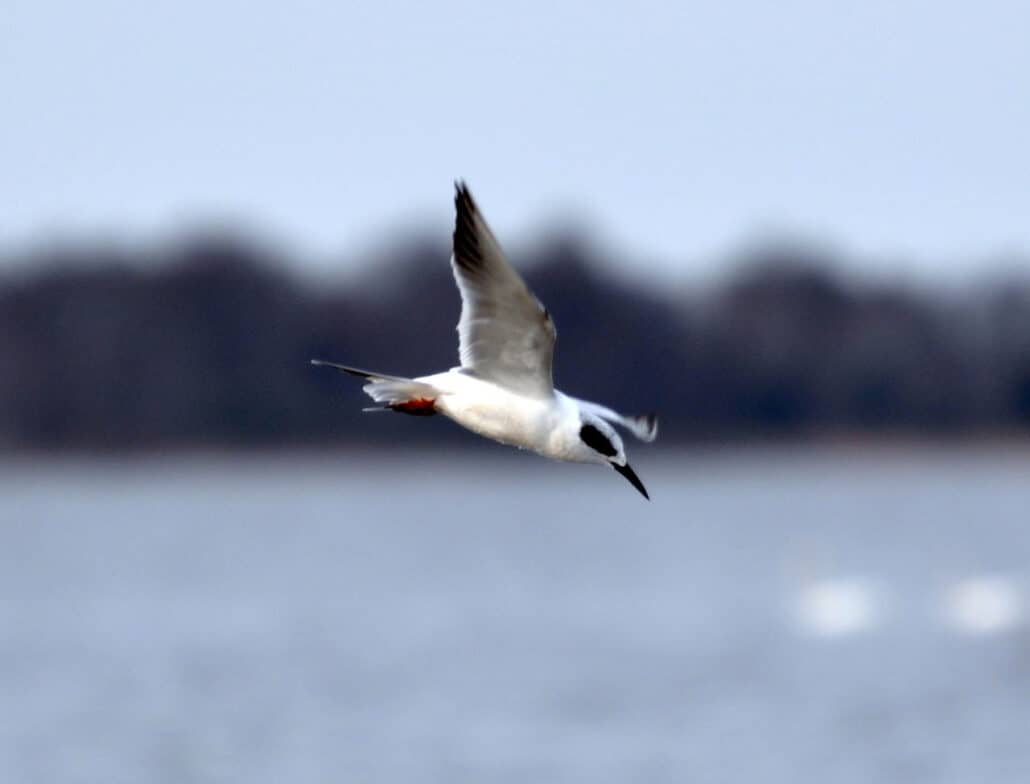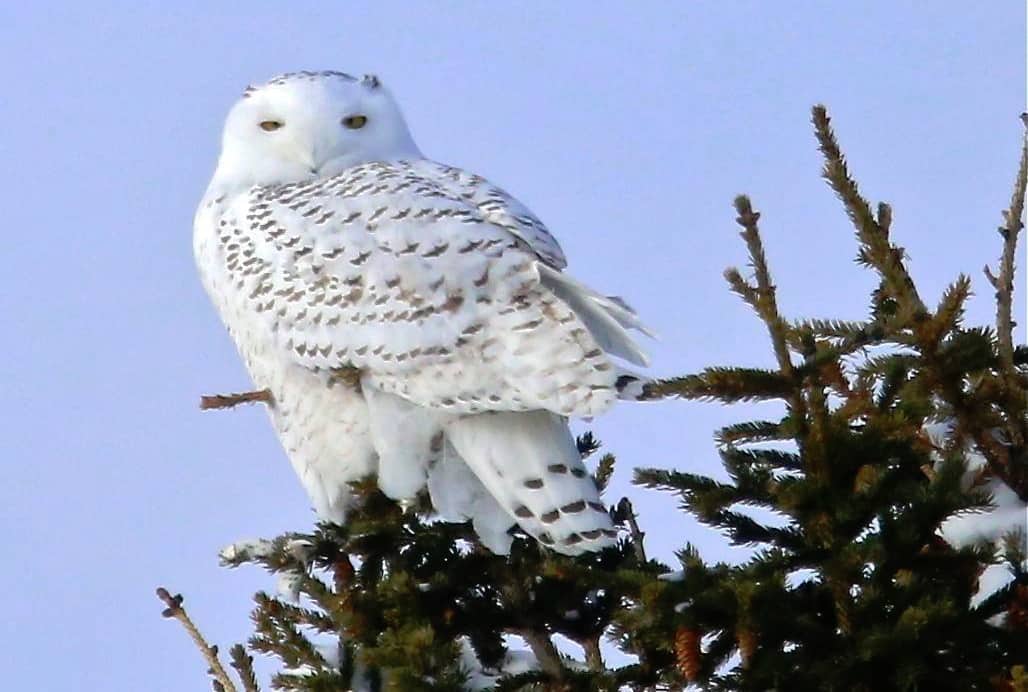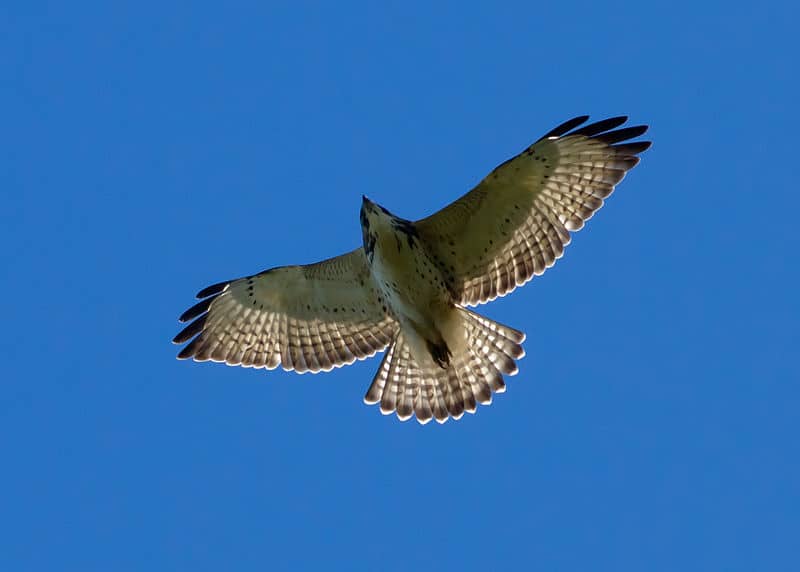Cape Hatteras National Seashore/Pea Island NWR
More than 70 miles of pristine public beach stretch from Bodie Island to Okracoke Inlet, providing one of the best year-round birding venues in the eastern United States. Nearly 400 species have been recorded here and more are added regularly. You can reach this area by car from the north or west via U.S. Rt. 158 or 64/264. Regular ferry service is also available to Okracoke at the area’s southern tip.
The variety of habitats provided here—beaches, inlets, salt and freshwater marshes, tidal pools, bays, shallow sounds, barrier dunes, and woodlands—make birding an exciting adventure at any time. Each season has its specialties, as fall migrants yield to rafts of winter ducks and spring shorebirds are followed by nesting waders, all accompanied by dozens of other species present for a day, a week, a month, or more. Periods immediately following severe storms are especially popular with birders as they search for the rarities that such weather often brings.
Lake Mattamuskeet/ Mattamuskeet National Wildlife Refuge
North Carolina’s largest natural lake, shallow Lake Mattamuskeet is a winter home for thousands of tundra swans (the largest concentration of these birds in the eastern United States), as well as huge numbers of snow geese and many other waterfowl. These are easily viewed from the refuge entrance road connecting Hwy. 94 to the park headquarters or from the Wildlife Drive on the south rim of the lake. There is also an observation area along Hwy. 94.
In addition to the waterfowl habitat provided by Lake Mattamuskeet itself, the surrounding marshes and woodlands host many other bird species as migrants, winter residents, or summer nesters. More than 200 species are on the current refuge checklist.
Carolina Beach State Park
Home of the Venus flytrap, a rare carnivorous plant that grows naturally only in a small area of southeastern North Carolina, Carolina Beach State Park has attracted 233 bird species to its varied habitats. Bordering the Cape Fear River, this park is situated on dunes and ridges typical of barrier islands and includes within its boundaries wooded sites of longleaf pine and turkey oak, as well as open grassy areas. Its coastal location and variety of vegetation make it a magnet for birds in all seasons. Swainson’s warblers and painted buntings draw birders in spring, fall migration can be spectacular, and winter brings waterfowl of all kinds. Five miles of foot trails offer easy access to all habitats.
Weymouth Woods/Sandhills Nature Preserve
Located near Southern Pines in the interior coastal plain, this sanctuary boasts a forest of longleaf pine and turkey oak that harbors a colony of endangered red-cockaded woodpeckers. These birds, though present year-round, are most easily seen during spring breeding season, when careful visitors may observe them at their sap-encrusted nesting trees. The park’s habitats include, in addition to the mature longleaf pine stands favored by the woodpeckers, bottomland hardwood forests, wetlands, and small streams. More than 260 bird species, as well as many interesting frogs, toads, salamanders, snakes and turtles, have been recorded here.
Jordan Lake State Recreation Area
Conveniently located near the Triangle area close to the population centers of Raleigh, Durham, and Chapel Hill, Jordan Lake State Recreation Area is best known among birders as the summer home of the bald eagle, America’s national bird. Up to 60 eagles roost and feed here in the warmer months, the largest such concentration in the eastern United States. An observation deck has been built to allow easy viewing of these magnificent birds.
Birding is good at Jordan Lake in all seasons, with the lake and surrounding woodlands providing nesting habitat for many species and refuge for numerous migrants in spring and fall. There is a healthy population of wintering birds as well: Christmas Bird Counts held here every December regularly produce 90 or more species in a single day.
Pee Dee National Wildlife Refuge
One of the best birding sites in the piedmont, Pee Dee NWR is worth visiting in any season. The refuge provides a variety of habitats attracting many kinds of birds. Nearly 3,000 acres of bottomland hardwoods and 1,200 acres of upland pines combine with croplands, abandoned fields, streams, ponds, and mixed woods to offer wintering, resting, or nesting territory for more than 200 bird species. A 2 1/2-mile wildlife drive allows easy vehicular access to each of the habitat types. As with all national wildlife refuges, portions of the park may be closed seasonally for conservation purposes, so check ahead with the refuge office before paying a visit.
South Mountains State Park
Located in the western piedmont, South Mountains State Park offers a taste of the Appalachians in its rugged landscape. In places its vegetation is more typical of the Blue Ridge than of the state’s central region, and so, too, are some of its birds. Among this park’s more than 60 nesting species are such “northern” specialties as black-throated green warblers, rose-breasted grosbeaks, and common ravens. Many birds common to the piedmont breed here as well, and an even greater variety may be found during spring and fall migrations.
Blue Ridge Parkway
Offering 252 miles of prime birding habitat, the Blue Ridge Parkway in North Carolina extends from Laurel Springs in the north to Cherokee, at the entrance to Great Smoky Mountains National Park. From spring through fall, birds are relatively easy to find at any point along this scenic road, but some favorite spots include Linville Gorge (MP 316.4); Great Craggy Mountains (MP 360-382); Shining Rock (MP 420.2); Devils Courthouse (MP 422.4) and Heintooga Spur Road (MP 458). Birds of northern affinities, often highly sought by southern birders, are more likely to occur at higher elevations. For a detailed description of the Parkway’s birding opportunities, see Mark Simpson’s definitive Birds of the Blue Ridge Mountains, available at libraries and bookstores throughout the region. Because of ice and snow at high altitudes, portions of the Parkway are frequently closed in winter to vehicular traffic.
Mt. Mitchell State Park
The highest point in the eastern United States, 6,684-foot Mt. Mitchell is reached from the Blue Ridge Parkway via a spur road, Rt. 128N, at MP 355.4. The spruce-fir forests that once blanketed this peak have been hard hit by insects and pollution, but those portions that remain still contain many unusual birds. The park is, for example, one of the most reliable places to find erratic species such as red crossbills and pine siskins.
The developed parts of the park, which contain among other attractions a restaurant and an observation tower, can be crowded at times, but there are many trails throughout the area that offer peace and quiet (and birds) for the price of a short walk. Look for red-breasted nuthatches, winter wrens, brown creepers, and other northern specialties. Cool even in summer, this park is a northern world in a southern state.
Great Smoky Mountains National Park
The most heavily visited national park in the U.S., Great Smoky Mountains can still offer a wilderness experience to anyone willing to walk a mile from any road. Even around such “people sites” as visitor centers and campgrounds, however, you will find birdlife in abundance, at least from spring through fall. Swainson’s warblers, saw-whet owls and black-capped chickadees are only a few of the intriguing possibilities awaiting a birder in this vast mountainous terrain.
Covering more than 800 square miles, reaching more than 6,600 feet into the sky (at Clingman’s Dome) and straddling the state line between Tennessee and North Carolina, this magnificent park has produced more than 235 bird species and a huge catalog of other flora and fauna (including more tree speciesthan are found on the entire European continent. ) With more than 20 breeding warbler species in residence from spring through midsummer and others passing through on migrations, Great Smoky Mountains National Park easily rates a top spot on every birder watcher’s “must see” list.




